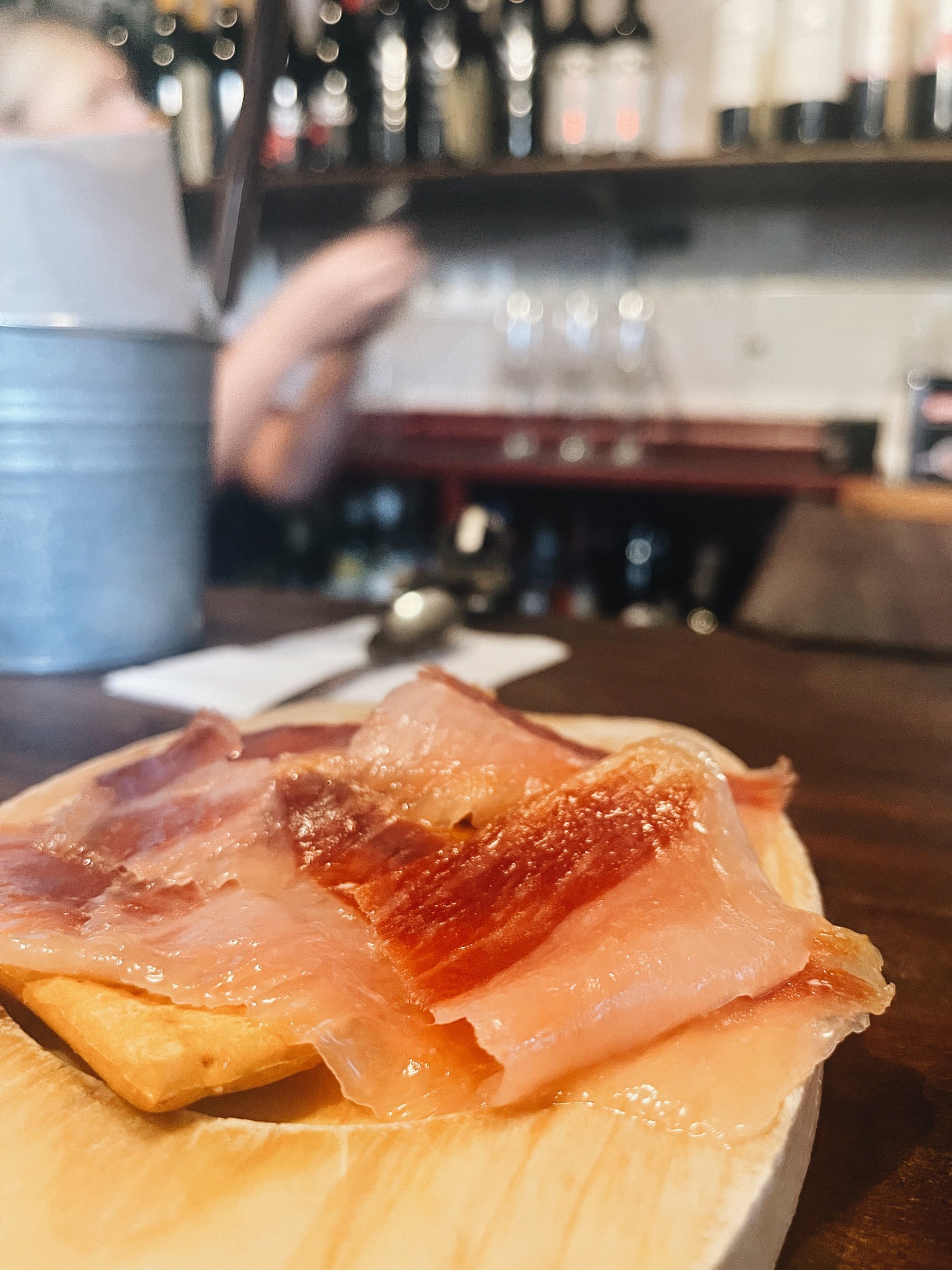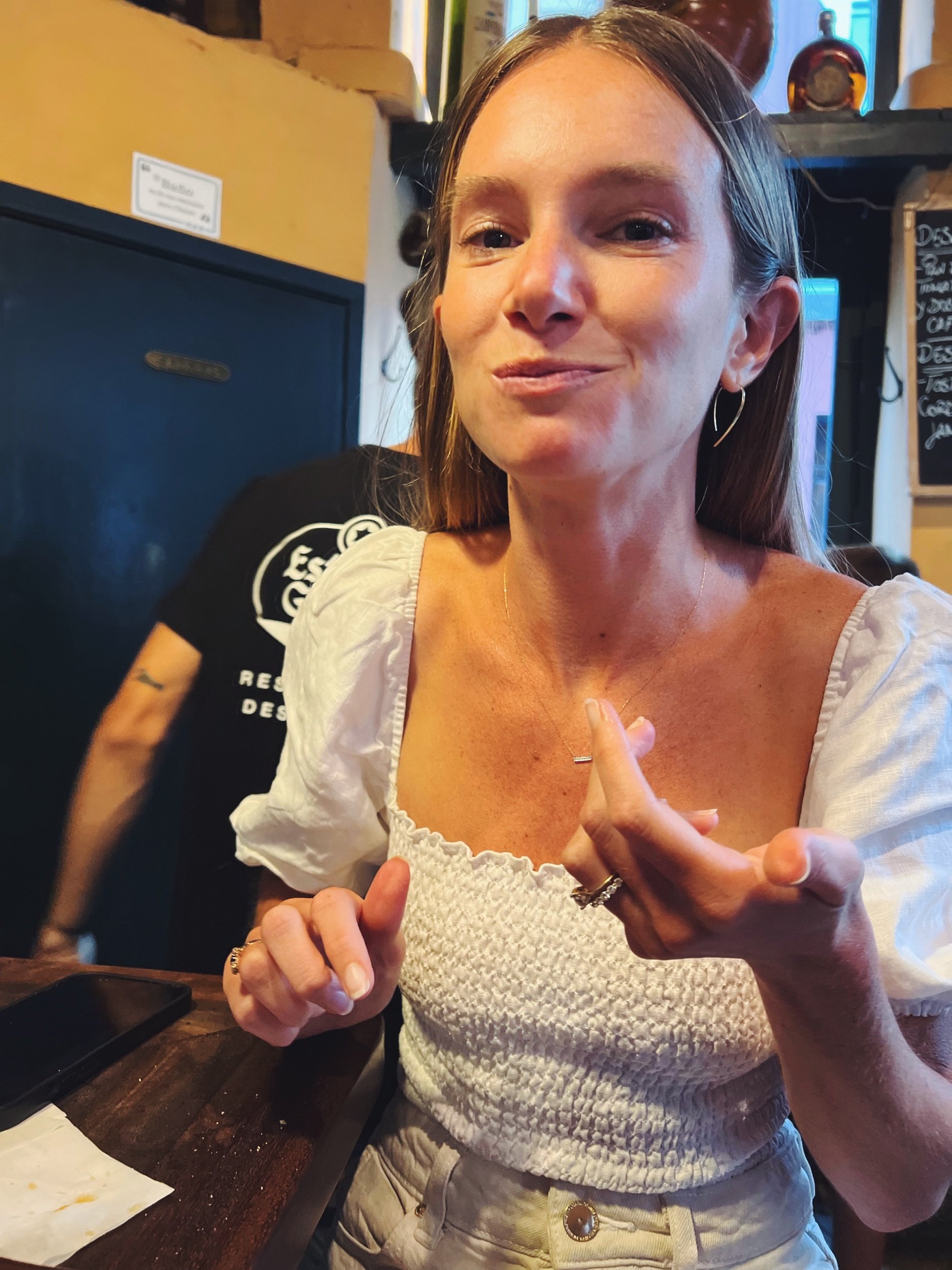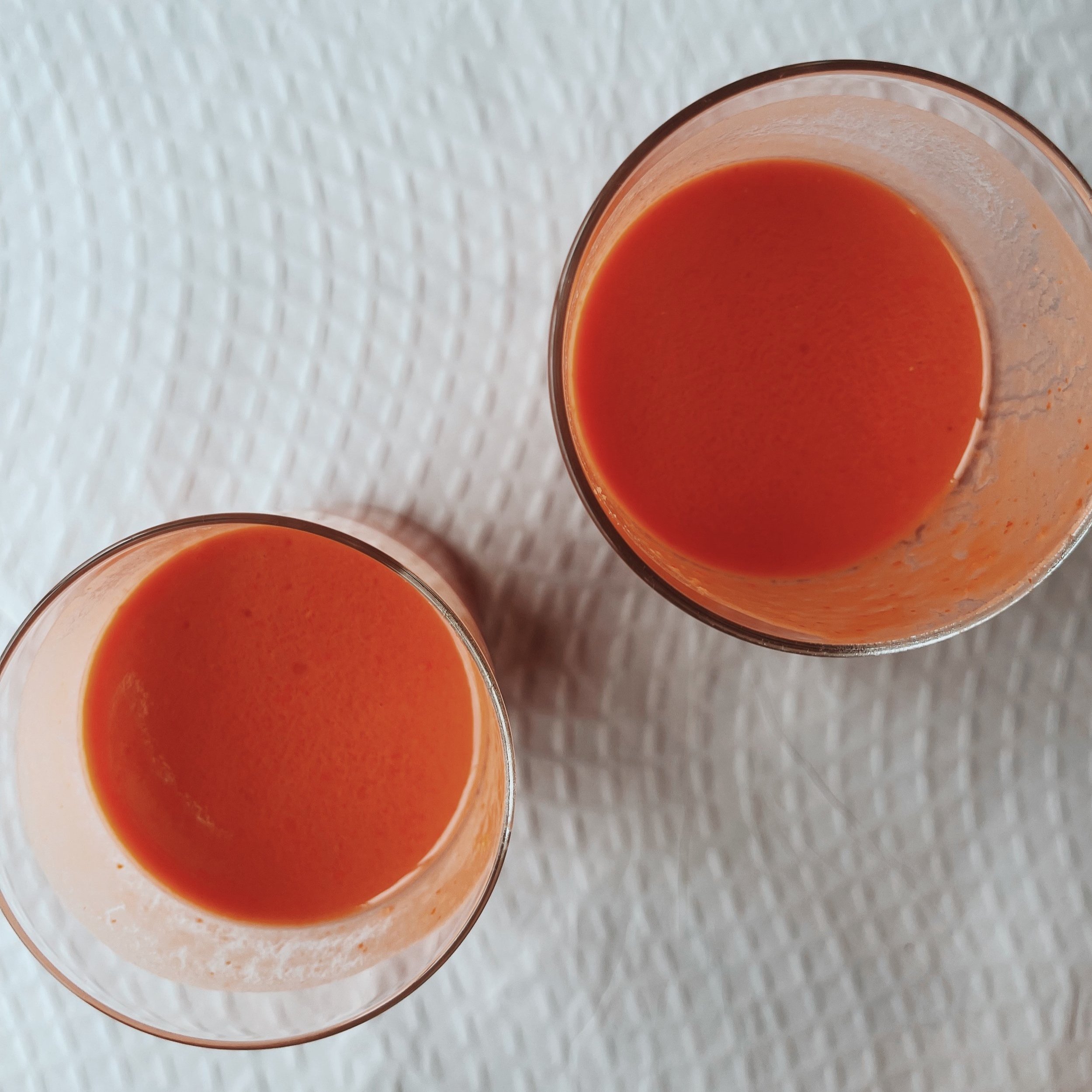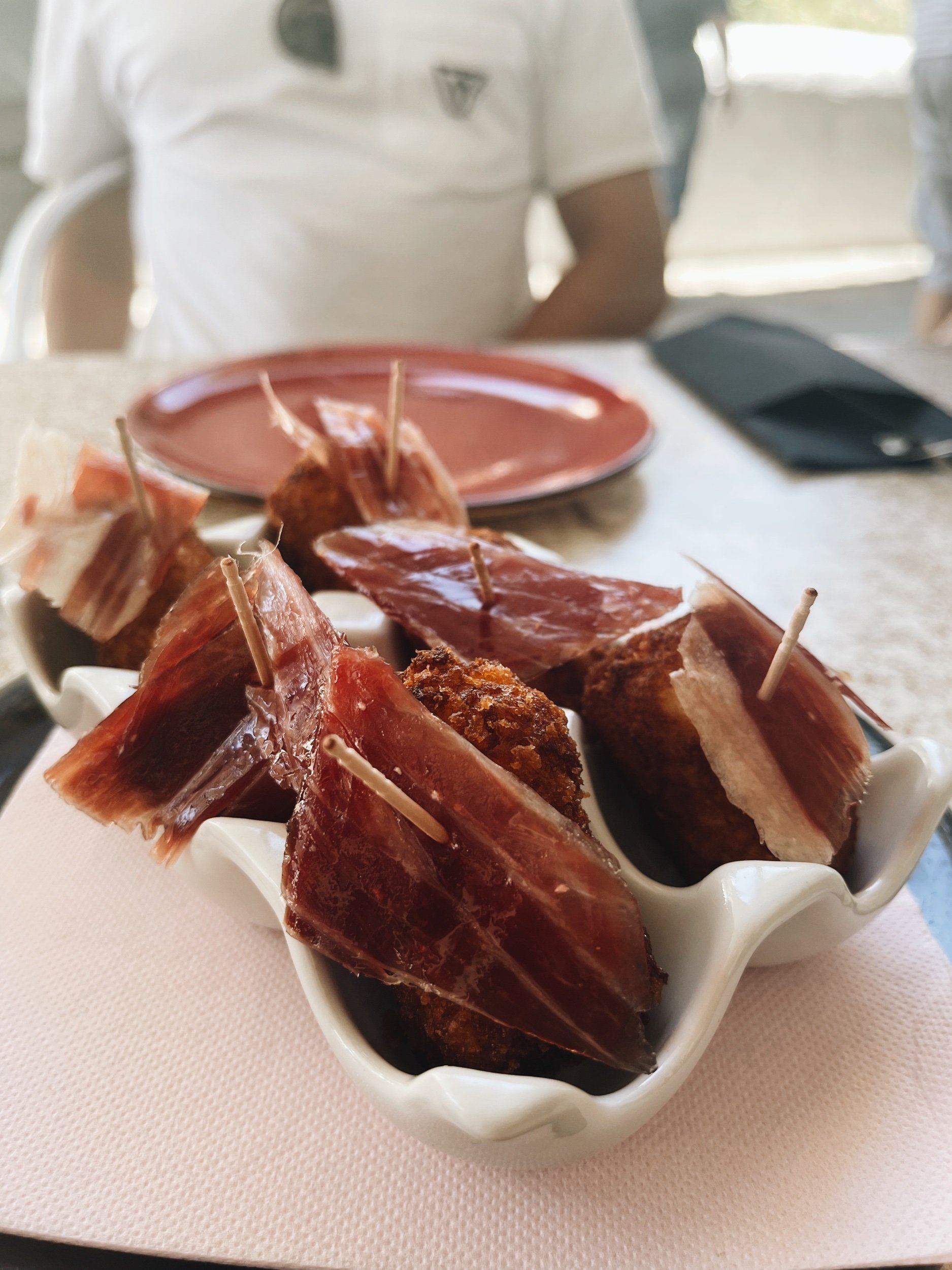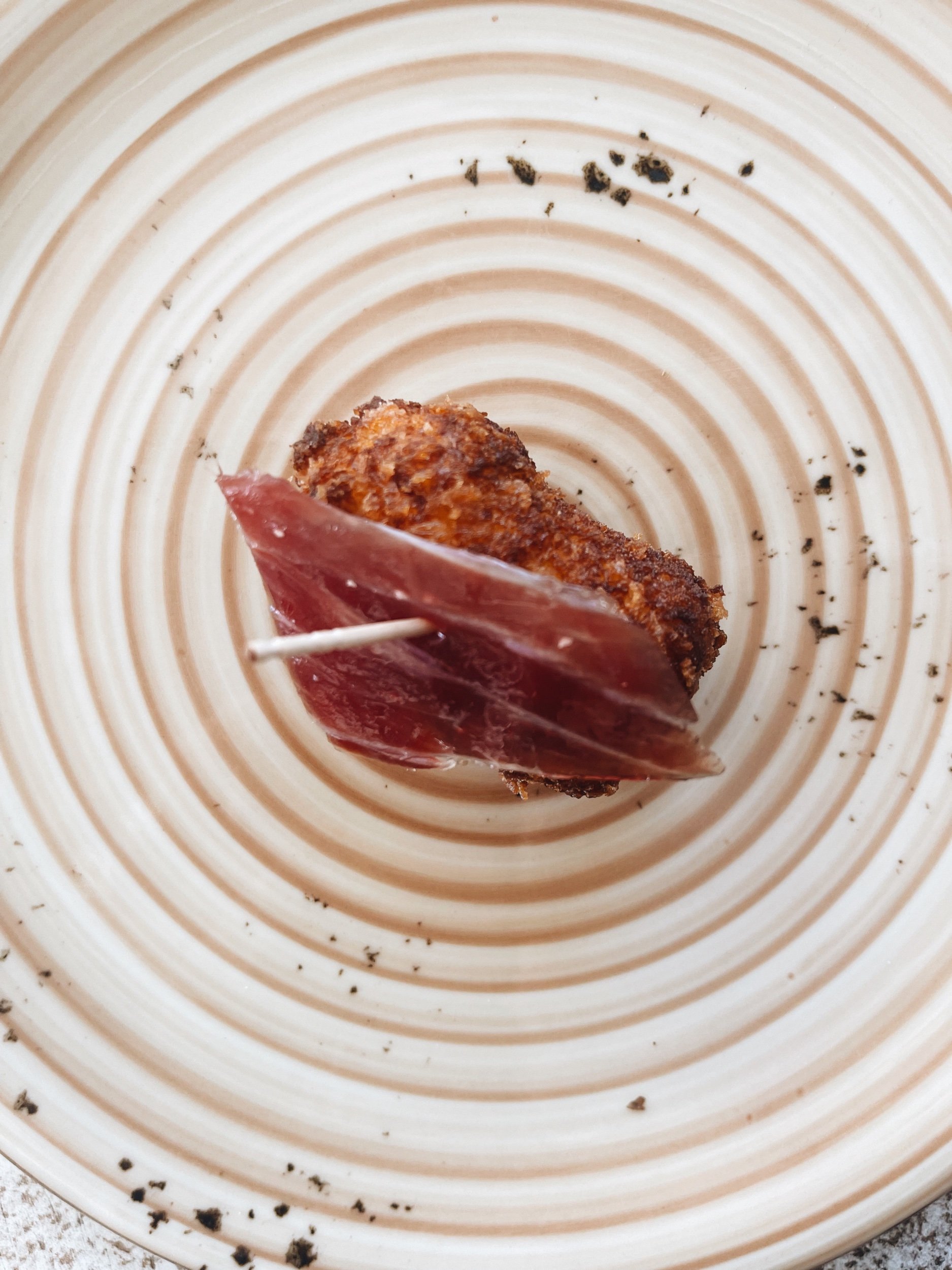It’s Tapas Time
Started in Andalusia. Perfected in Basque.
When a Spanish expat proclaimed tapas started in Andalusia but were perfected in Basque Country, we were a bit dubious. What does that’s even mean? But while his idiom came off generalized - even unconvincing - it was exactly how we experienced the gastronomy of this country. In Andalusia, we could taste the old-world crafting in each bite we sunk our teeth into. And in Basque Country, there was an elevated flavor sensation and technical precision we hadn’t experienced. Sound like a bunch of culinary jargon? Let me explain.
Tapas started in Andalusia
While the origin of tapas is not definitive, the snacks in Andalusia exuded tradition. Dishes were simply prepared and repeated throughout the region; they’re the typical tapas that first come to mind. But the bold flavors were far from ordinary. Bites tasted like recipes woven together with local ingredients and preserved for generations. It was like experiencing a grandmother’s recipe, time and time again. Here were some of our favorites.
Iberian ham
As we opened the large wooden door into to Bar Alfalfa, we walked into a true Spanish party. A rustic bar wrapped around the back half of the wall with patrons clustered together engaging in vibrant conversations. In the center, a group of ten locals were clinking glasses, dancing around chairs, and grabbing bite sized tapas that covered their high top tables. Music sent vibrations through the room and servers were singing along to local songs. The energy was unmatched. We squeezed our way to the bar, with Iberian ham on our mind. As we ordered, we watched the bartender carve juicy pieces of cured meat and slide a small plate down the bar like a slingshot. He looked up and gave us a nod, indicating this was our plate. Without hesitation, we grabbed a piece and popped it in our mouth. Compared to most cured meat we’ve had in the states, this Iberian ham was slightly more dense and soft. There was a rich umami flavor that coated our mouths and a film of pork residue on our fingertips that left us craving the next bite. Michael is now talking about installing a meat locker in our future home.
Gazpacho
You can find an array of fresh produce and tasty bites the second you step foot into the Mercado de Triana in Seville. While we visited, many of the stalls were closed thanks to omnipresent summer Spanish holiday, but I could still smell heavenly scents permeating through the air. We stumbled onto Obrador La Osa, a small stand towards the back of the market where an older woman whipped up local specialities. Gazpacho wasn’t a new dish to us, but the flavors being served here were extraordinary. When we ordered, she pulled out a glass pitcher and poured two 8 oz drinking glasses of a bright orange liquid. We took a sip and my tastebuds exploded with sweet and sour flavors. Gazpacho isn’t often described as a thirst quencher but each sip was pure salvation from the scorching summer heat. It was like having a glass of lemonade on a hot day, bright and refreshing.
Salmorejo
I want to start off by saying salmorejo should not be confused with gazpacho. With each slurp of gazpacho, we were greeted with a crisp flavor that cleansed the palate. That’s usually because gazpacho is blended with other acidic vegetables and then strained into a thin, drinkable delight. But salmorejo was completely different. While the color profile might deceive a first timer, this tapa had a depth in flavor that was unmistakable. And undeniable. It’s thicker, richer, and quickly became one of my favorite tapas in Andalusia. The bowl at La Compañía - Vinos Y Tapas in Cordoba was truly top notch. There’s a creaminess that felt comforting with each spoonful and the layer of Iberian ham on top was the perfect touch. We learned that the creamy flavor actually comes from the emulsification of tomatoes and olive oil, but still imitates a creamy sensation like a bisque. The textural complexity left us amazed.
Duck Magret
After walking through Parque de María Luisa in Seville, we needed reprieve from the August sun. Naturally, we set out to find a covered terrace where we could enjoy a few quick bites. We found a pair of seats at Abaceria del Postigo and our server quickly convinced us to order the duck magret. The traditional tapa came out in delicate slices that had been lightly sautéed. Each piece glowed with olive oil and brimmed with chunks of sea salt. The duck alone would have been a satisfying bite of rich perfection but there was a dollop of mango reduction over each piece that set this dish apart. It was the kind of sauce that you would expect on a salad - bright, light, and slightly sweet. The sweetness cut the saltiness of the duck like a hot knife through butter. We seriously questioned whether we would ever have duck this good again.
Croquette
Croquettes are the glorified Spanish tapa that have made their way across the globe. And for good reason. These small fried balls are traditionally packed with béchamel and small pieces of meat. They’re salty. They’re crunchy. They’re rich. And they are 1000x better in Spain. We weren’t shy when it came to ordering these throughout our time here and found that the crispy outer layer was a key standout element to perfecting the croquette. It should act as a thin blanket that holds together the creamy filling. We thought it would be hard to pick our favorite bite until we tried croquettes at Bar Frasquito in Setenil de las Bodegas, a tiny town tucked in between the mountains. As we bit into our first taste, chunks of Iberian ham filled our mouths like pieces of pepperoni on a pizza. Immediately my tastebuds were searching for that next salty piece. The added bonus was a thick slice of the Iberian ham which delicately laid over the croquettes. It was the quintessential two-for-one tapa!
But they were perfected in San Sebastián
Andalusian tapas focused on simplicity where recipes felt like they had been preserved since the beginning of tapa time. But when we entered Basque Country, we stepped out of traditional tapa territory and entered the land of perfected pintxos. Sure, “pintxos” is just regional translation for tapas in the region, but we quickly found an entirely new meaning to these bites. In San Sebastián, pintxos were the cultural fabric of the town. Guests would hop around to multiple spots throughout the evening - standing around crowded bars and searching for the best bites. The velocity of movement from one spot to the next may have urged tapas chefs to push creative boundaries. The result? Specialty pintxos bars showcasing innovative dishes that could really wow a crowd.
Gilda
This pintxo was introduced to us by a devout San Sebastián enthusiast we met while road-tripping through Portugal. He’s the Spanish expat I referenced earlier on. The flavor combination of olives, peppers, and anchovies captivated us and we were elated to get the real deal in San Sebastián. Bar Txepetxa was famed for its seafood pintxos making it an ideal spot to try gilda. A small toothpick was crammed with plump yellow peppers and laced with a crimson anchovy. The oils from the olives fused the ingredients into one juicy explosion. It was our first bite in San Sebastián and but certainly not the last Gilda we had during our time here.
Foie gras, a la plancha
Immediately after a few seafood pintxos at Bar Txepetxa, we strolled over to Bar Sport. The place was hectic in all the best ways. Crowds gathered around the long wooden bar waiting to place their order for small dishes of meats and large pours of Txakoli. Waves of guests moved in and out of the restaurant every 20 minutes so we eventually squeezed our way to the front of the bar. Once there, we were quick to order the foie gras. Now any time I’ve had foie gras, it’s served as a dense paste, spread over toast like thick peanut butter. It usually has a similar profile to pate. But when the pintxo arrived in front of us, we were formally introduced to foie a la plancha - grilled duck liver. Rather than a spread, two small crostini came out with tender pieces of liver. It was pillowy, fatty and honestly a little intimidating. However the first taste melted away any timidness. Oils oozed out with rich umami flavor sensations. It was like a decadent treat you knew you shouldn’t have a lot of but couldn’t resist from finishing.
Grilled squid, a la plancha
Another a la plancha pintxo at Bar Sport that wow’d us was the grilled squid. My eyes widened with delight when the plate arrived. The small squids were tender and my fork melted through one with complete ease. The squid had a mildly sweet flavor and meatiness which was excellent but the oily green sauce painted across the fish really set this dish apart. It was lemony which brightened the fish and had an earthy taste, likely from parsley. It was so good we went back and ordered it again on our last day.
Morcilla
When we asked the bartender at La Cuchara de San Telmo for a recommendation, he didn’t hesitate to suggest the morcilla. He described it as blood sausage, which both Michael and I were enticed by. However, instead of an encased sausage, morcilla was more akin to a “blood pudding.” It was presented like a thin burger patty and the first bite has easily been one of my favorites from the trip. There was the slightest crisp with sesame seeds around the perimeter that easily crumbled into a soft, warm center. The texture was delicate and dissolved in our mouths unlocking the most memorable flavor. The sweetness stood out above any other blood sausage we’ve had. It was addictingly sweet without being overpowering, like a quick sugar rush without the comedown. Where did that sweetness come from? We decided we didn’t want to know. Ignorance is bliss right?
The Tortilla
When planning our trip to San Sebastián, we knew eating the tortilla at Bar Nestor was an absolute must. With numerous press pieces and raving online reviews of this Spanish style omelet, we made it our mission to get into this bar. However, our journey to get into Bar Nestor wasn’t easy. With multiple failed attempts at making a reservation and securing a piece of the tortilla, we were finally able to land a spot and a slice on our very last day. How fitting.
After we took our place at the bar, the tortilla was paraded out on a large plate and cut into 12 pieces. Now, I’ve had a lot of egg-focused dishes in my day - in fact, we make a breakfast casserole every Christmas morning. But something stood out here above any baked egg dish I’ve ever had. A thin egg crisp shaped the dish like a slice of pie and held together a filling of potatoes and onions. The starch of the potatoes soaked up juices to create a golden filling that was dense without being too thick. These ingredients came together in a bite that was synchronously sweet and salty. It had us craving breakfast the rest of the day and was the perfect tapa to end an epic two week binge.

